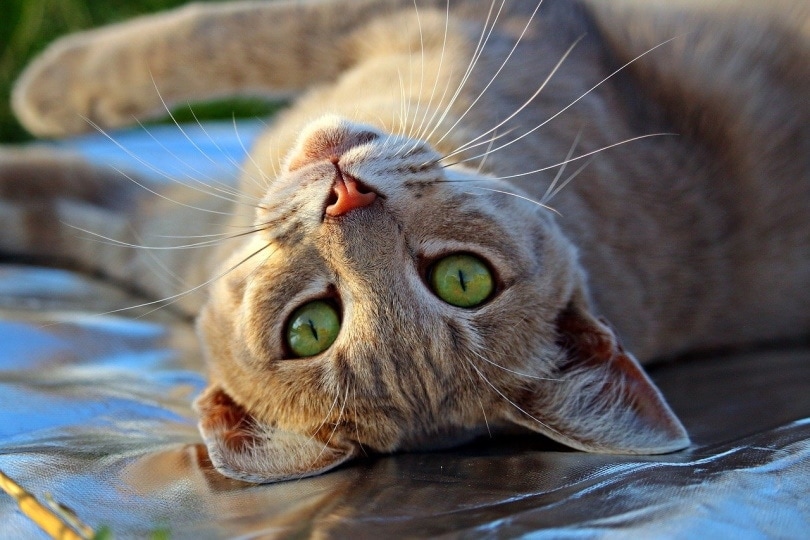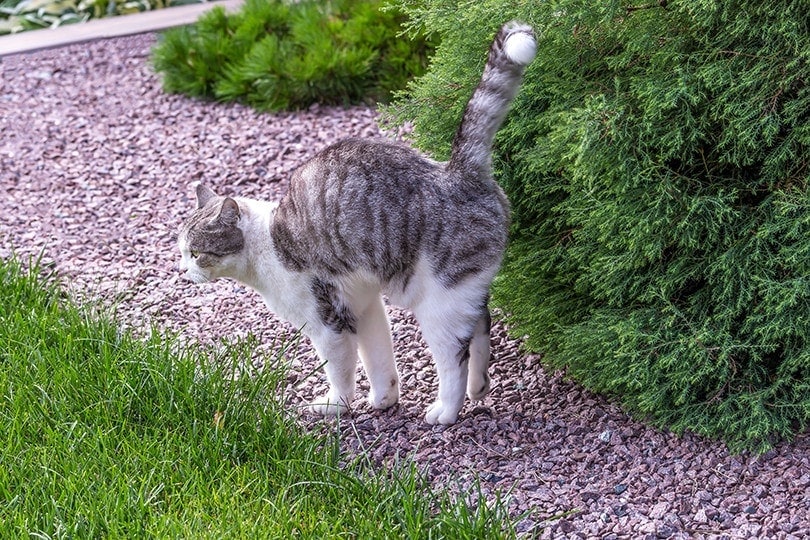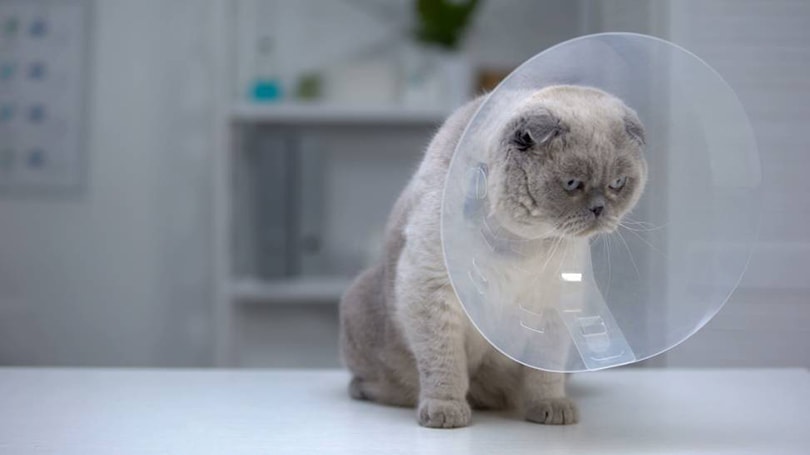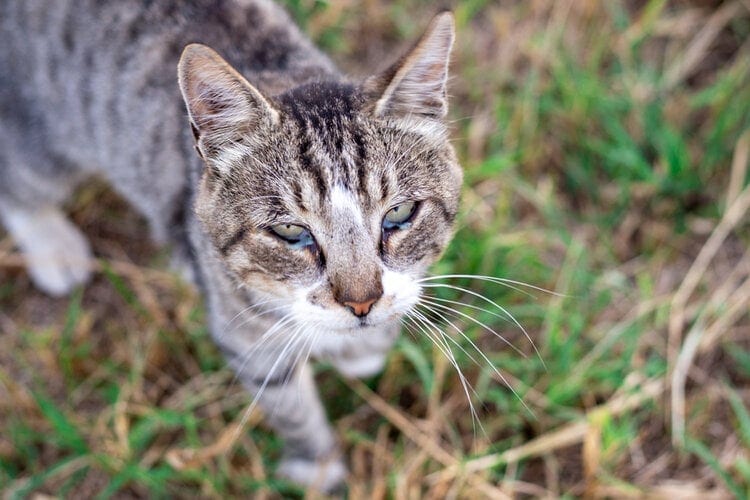Do Cats Feel Pain When In Heat? Our Vet Discusses Signs, Cycles & Tips

Updated on

Click to Skip Ahead
It can be distressing to hear your cat vocalize loudly when in heat, and you may wonder if her unusual behavior is due to pain. However, it is highly unlikely that cats feel pain when in heat.
The howling noises that a female cat makes when she is in heat (also known as “caterwauling”) are not a sign of pain but are used to attract male cats. All that commotion is made to let potential mates know that she is in the fertile period of her reproductive cycle and ready to mate.
Additional Signs of the Heat Cycle
Along with vocalizing, a female cat in heat will show other behavioral changes. She may become unusually affectionate and rub up against people and other objects. A cat in heat may appear unsettled and restless, lose her appetite, and try to escape. When stroked along the back, she may raise her rear quarters and tread rhythmically with her back legs.
A cat in heat may also spray urine against vertical surfaces in the home. This sexual behavior can be disruptive and alarming to owners who haven’t previously owned an entire (unneutered) female cat. Some owners may even worry that their cat is in pain or ill.
The behavioral changes seen when a cat is in heat are normal and are probably more distressing for owners than for the cat. The sexual behavior associated with a cat’s heat should disappear after about a week but will recur every 2–3 weeks when she is in the fertile period of her reproductive cycle again.

The Feline Heat Cycle
A cat in heat is sexually receptive and can become pregnant if allowed to mate with an intact male cat. A cat will go into heat when she reaches sexual maturity at around 6 months old, although a cat as young as 4 months old can go into heat.
Cats are seasonally polyestrous, meaning they have multiple heat cycles during the breeding season unless interrupted by pregnancy or illness. A cat’s breeding season is dependent on the length of daylight. In the Northern Hemisphere, female cats usually cycle from January to October or November.
On average, each heat lasts around 6 days, with the cycle generally repeating itself every 2 to 3 weeks during the breeding season if she doesn’t get pregnant.
Female cats are capable of having one to two litters per year and have one to ten kittens per litter. During her reproductive life, a cat could potentially give birth to more than 100 kittens!
Can I Stop My Cat From Making Noise While in Heat?
Even though the behavioral changes associated with heat are normal, it can be disruptive living within an intact female cat. If you are not planning on breeding your cat, it is recommended that you have her spayed. Spaying is the only way to permanently prevent unwanted sexual behavioral patterns associated with a cat’s heat.
Some drugs can be used to suppress the reproductive cycle, but they carry a risk of significant side effects and their long-term use is not recommended. Spaying not only reduces the possibility of unplanned pregnancies but also the risk of a cat developing ovarian and uterine cancers later in life.
Spaying your cat will also prevent her from developing a potentially life-threatening infection of the uterus, known as pyometra. Intact female cats attract intact males looking to mate, which creates further problems of spraying, fighting, and caterwauling in the area. Spaying will prevent this from happening.
During a spay (also known as an ovariohysterectomy), the ovaries and the uterus are surgically removed under general anesthesia, which in turn removes the hormones responsible for the unwanted behavior. The best time to spay your cat is before her first heat cycle.
Contrary to what was thought in the past, there is no benefit to waiting for your cat to have her first heat cycle before spaying her. If you don’t have your cat spayed before her first heat cycle, you should ideally wait until your cat is no longer in heat before spaying her. If a cat is spayed when in heat, there is an increased risk of bleeding, and the procedure may take slightly longer than usual.

Conclusion
Although female cats vocalize loudly and behave strangely when in heat, the behavior is totally normal and does not mean that she is in pain or sick. Cycles of sexual activity typically occur every 2 to 3 weeks and last for around 6 days. Spaying your cat is the best way to eliminate sexual behavior and prevent disruptive visits from male cats in the neighborhood. Spaying also eliminates the possibility of unplanned litters of kittens, infections, and tumors of the genital tract.
Featured Image Credit: rihaij, Pixabay










